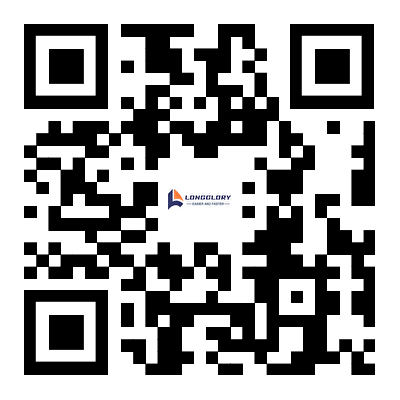- English
- Español
- Português
- русский
- Français
- 日本語
- Deutsch
- tiếng Việt
- Italiano
- Nederlands
- ภาษาไทย
- Polski
- 한국어
- Svenska
- magyar
- Malay
- বাংলা ভাষার
- Dansk
- Suomi
- हिन्दी
- Pilipino
- Türkçe
- Gaeilge
- العربية
- Indonesia
- Norsk
- تمل
- český
- ελληνικά
- український
- Javanese
- فارسی
- தமிழ்
- తెలుగు
- नेपाली
- Burmese
- български
- ລາວ
- Latine
- Қазақша
- Euskal
- Azərbaycan
- Slovenský jazyk
- Македонски
- Lietuvos
- Eesti Keel
- Română
- Slovenski
- मराठी
- Srpski језик
How to Import Gym Equipment from China: A Comprehensive Guide
2024-09-06
This article provides a detailed step-by-step process for importing gym equipment from China, helping business owners navigate the complexities of international trade.
Table of Contents:
1. Gaining Essential Knowledge
2. Finding Reliable Suppliers
3. Communicating with Chinese Suppliers
4. Understanding Legal Requirements and Standards
5. Making a Purchase
6. Shipping and Logistics
7. Import Customs Clearance
8. Post-Purchase Tasks

1. Gaining Essential Knowledge
Understanding the market, product specifications, and the costs involved is crucial for successful importing.
Key Considerations:
· Identifying the Need: Determine what type of GYM Equipment is required (e.g., weights, treadmills) based on your facility's demands. If you're planning to build a full GYM Station, you’ll need to assess the range of equipment needed, from free weights to large machinery.
· Chinese Gym Equipment Market: China’s fitness market reached $10 billion in 2024. Research manufacturers to find reliable suppliers, especially for large-scale GYM Station setups.
· Budget and Costs: Assess total costs, including shipping, customs duties, and taxes. Calculate the landed cost to ensure profitability for your GYM Equipment purchases.
2. Finding Reliable Suppliers
Locating a trustworthy supplier is a critical step in importing.
Methods:
· Online Marketplaces: Use Google website or B2B platforms to find a wide range of suppliers. Specialized suppliers tend to provide higher-quality products, which is particularly important if you're importing for a GYM Station.
· Trade Fairs: Attend events such as the China International Sporting Goods Show to meet manufacturers in person, especially when sourcing GYM Equipment for a large installation.
· Supplier Verification: Always verify the supplier’s track record through background checks and reviews to ensure the quality of equipment for your GYM Station.
3. Communicating with a Chinese Suppliers, such as longgloryfit.com
Effective communication is key to building successful partnerships.
Steps:
· Initial Contact: Research suppliers thoroughly and build rapport from the outset. A strong relationship will help you source the best GYM Station equipment.
· Negotiating Prices: Discuss pricing, shipping terms, and payment conditions transparently.
· Product Samples and Quality Checks: Always request samples and inspect them for quality and durability before placing bulk orders, especially for GYM Station setups that require multiple types of equipment.
4. Understanding Legal Requirements and Standards
Comply with local regulations to avoid delays or penalties.
Main Areas:
· Local Import Regulations: Understand the rules in your country, such as obtaining import licenses.
· Safety and Quality Standards: Ensure the equipment meets local and international safety certifications (e.g., CE, ISO).
· Intellectual Property Rights: Verify that the products do not infringe on patents or trademarks.
5. Making a Purchase
Finalize your transaction with the supplier after ensuring all terms are clear.
Key Elements:
· Invoice and Purchase Order: Ensure all product details, pricing, and shipping terms are clearly stated.
· Payment Methods: Choose secure options like wire transfers, letters of credit, or Alibaba’s Trade Assurance, based on the deal’s security and convenience.
6. Shipping and Logistics
Managing shipping efficiently is crucial to minimizing delays and costs.
Steps:
· Choosing a Freight Forwarder: Select a reliable freight forwarder to handle shipping, documentation, and customs clearance.
· Understanding Incoterms: Be familiar with Incoterms like FOB (Free on Board) and CIF (Cost, Insurance, and Freight) to clarify responsibility for shipping and costs.
· Tracking Shipments: Use freight forwarders that offer real-time tracking to stay updated on delivery timelines.
7. Import Customs Clearance
Navigating customs clearance is a critical step to avoid delays and penalties.
Key Points:
· Necessary Documents: Prepare invoices, packing lists, and bills of lading for customs clearance.
· Duties and Taxes: Calculate customs duties and taxes based on the import country’s rules.
· Release and Delivery of Shipment: Ensure timely payment of duties to avoid delays in receiving the equipment.
8. Post-Purchase Tasks
After the purchase, ensure smooth operations and maintain supplier relationships.
Key Tasks:
· Quality Inspection and Testing: Verify that the equipment meets performance standards upon delivery.
· Customer Service and Warranty: Establish a process for handling warranty claims and customer service queries.
· Building Long-Term Supplier Relationships: Maintain regular communication and trust with suppliers for future business dealings.
Conclusion
Importing GYM Equipment from China can be a straightforward process with the right planning and research. By following these steps, you can ensure a successful and profitable venture.




